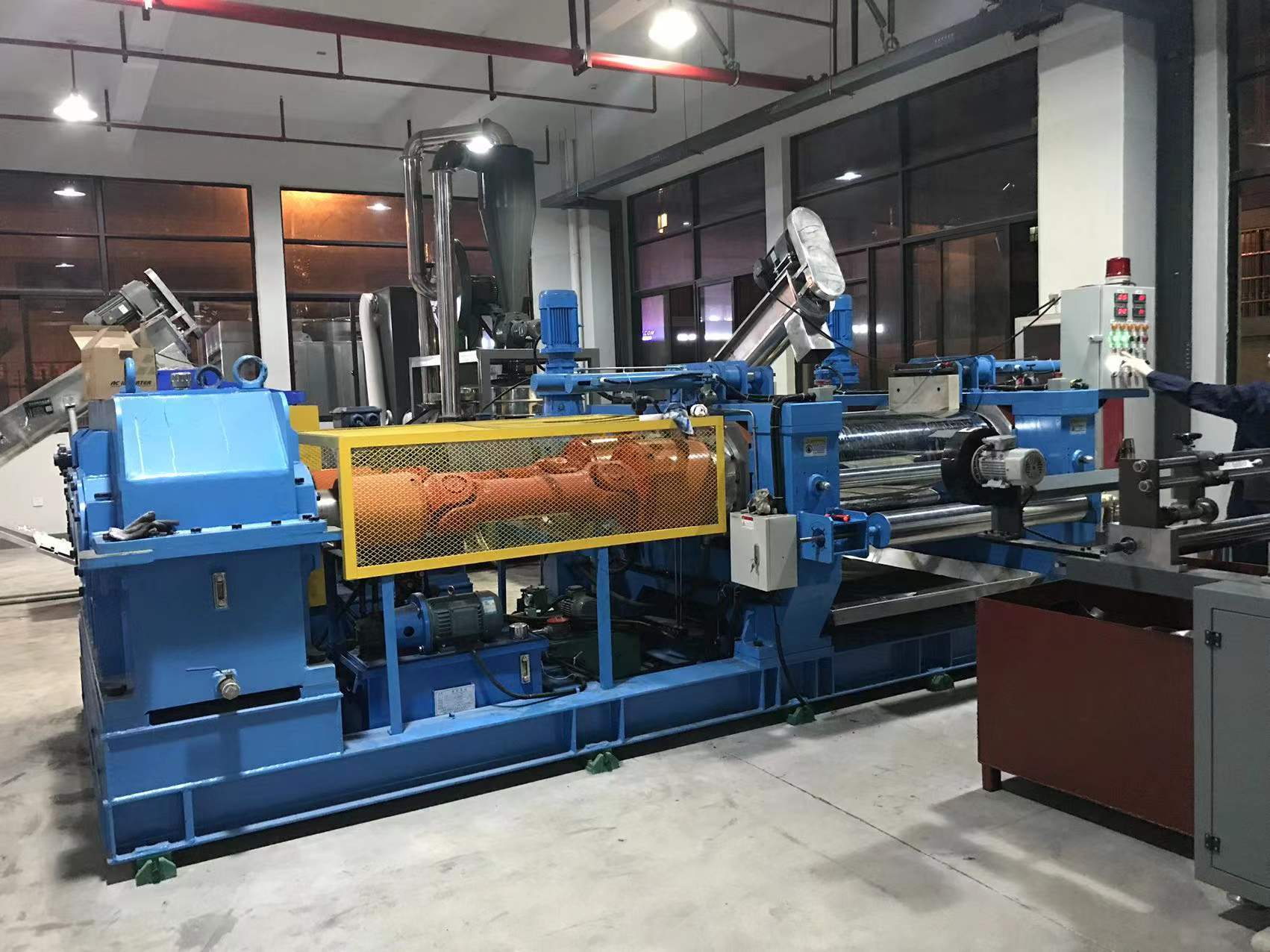
All about internal mixers! Learn about the magic of rubber mixing
Release time:
2024-12-13
I. What is an internal mixer? Internal mixers are important equipment for rubber plastication and mixing. The working principle and structure are revealed. An internal mixer is a machine that uses a pair of rotors with specific shapes and relative rotation to intermittently plasticize and mix polymer materials under adjustable temperature and pressure in a closed state. It mainly consists of a mixing chamber, rotors, rotor sealing device, feeding and pressing device, discharging device, transmission device and base. Working principle: When the internal mixer is working, the two rotors rotate relatively, clamping the material from the feeding port and bringing it into the roll gap. The material is squeezed and sheared by the rotors, and after passing through the roll gap, it hits the tip of the lower top plug and is divided into two parts, respectively flowing along the front and rear chamber walls and the gap between the rotor and returning to the upper part of the roll gap. In one cycle around the rotor, the material is subjected to shear and friction everywhere, causing the temperature of the rubber to rise sharply, the viscosity to decrease, and the wettability of the rubber on the surface of the compounding agent to increase, allowing the rubber to fully contact the surface of the compounding agent. The compounding agent lumps pass through the gap between the rotors, the gap between the rotors and the upper and lower top plugs, and the gap in the inner wall of the mixing chamber along with the rubber, and are broken by shearing, surrounded by stretched rubber, and stabilized in a broken state. At the same time, the convex ridges on the rotor cause the rubber to move along the axial direction of the rotor, playing a stirring and mixing role, so that the compounding agent is mixed evenly in the rubber. Closed-type rubber mixing machines, also known as Banbury mixers, play a key role in rubber processing. Since the appearance of the truly meaningful Banbury internal mixer in 1916, the power of the internal mixer has gradually been recognized. It shows a series of excellent characteristics compared to open mixers in the rubber mixing process, such as large mixing capacity, short time, high production efficiency; better overcoming dust flying, reducing the loss of compounding agents, improving product quality and working environment; safe and convenient operation, reducing labor intensity; beneficial to the realization of mechanical and automated operation, etc. Therefore, internal mixers are still typical and important equipment in plastication and mixing, and are constantly developing and improving.
I. Internal Mixer What is it?
- Internal Mixer It is an important equipment for rubber plastication and mixing, the working principle and structure are revealed.
-
- An internal mixer is a machine that intermittently plasticizes and mixes polymer materials under adjustable temperature and pressure in a closed state with a pair of rotors of specific shapes rotating relative to each other. It mainly consists of a mixing chamber, rotors, rotor sealing device, feeding and pressing device, discharging device, transmission device and base, etc.
-
- Working principle: When the internal mixer is working, the two rotors rotate relatively, clamping the material from the feeding port and bringing it into the roll gap. The material is squeezed and sheared by the rotors, and after passing through the roll gap, it hits the tip of the lower top plug and is divided into two parts, respectively flowing along the front and rear chamber walls and the gap between the rotor and returning to the upper part of the roll gap. In one cycle around the rotor, the material is subjected to shearing and friction everywhere, causing the temperature of the rubber to rise sharply, the viscosity to decrease, and the wettability of the rubber on the surface of the compounding agent to increase, allowing the rubber to fully contact the surface of the compounding agent. The compounding agent lumps pass through the gap between the rotors, the gap between the rotors and the upper and lower top plugs, and the gap in the mixing chamber wall along with the rubber, are sheared and broken, surrounded by stretched rubber, and stabilized in a broken state. At the same time, the convex ridges on the rotor cause the rubber to move axially along the rotor, playing a stirring and mixing role, so that the compounding agent is mixed evenly in the rubber.
- Closed mixing mill, also known as Internal Mixer ,plays a key role in rubber processing.
-
- Since the emergence of the truly meaningful Banbury internal mixer in 1916, the power of the internal mixer has gradually been recognized. It shows a series of superior characteristics compared to the open mill in the rubber mixing process, such as large mixing capacity, short time, high production efficiency; better overcoming dust flying, reducing the loss of compounding agents, improving product quality and working environment; safe and convenient operation, reducing labor intensity; beneficial to the realization of mechanical and automated operation, etc. Therefore, the internal mixer is still a typical and important equipment in plastication and mixing, and is still constantly developing and improving.
Previous
Next
Previous:
Next:







